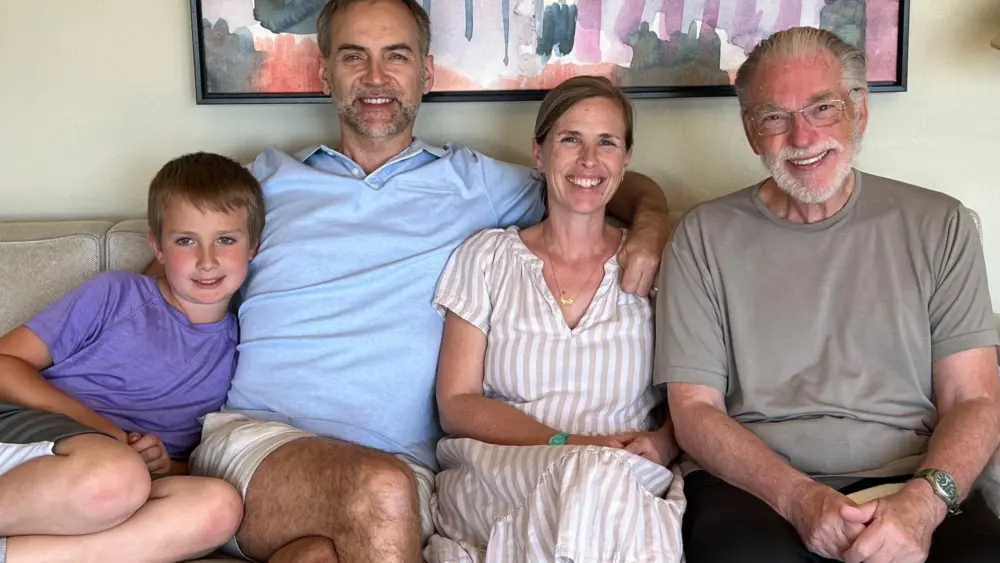NorthBay biz celebrates its 40th anniversary with a look at how Wine Country has changed over the years.
When the first issue of Sonoma Business hit the newsstands in 1976, California’s wine industry was just starting to take off. Undeniably, life was different then. Richard Nixon had been out of office for only a few months, the Vietnam War finally ended with the fall of Saigon, the Boston Red Sox were World Series losers (again), and it would be six years before the San Francisco 49ers were on anyone’s radar screen.
And wine? Well, fine wine was made in France. Or so everyone thought, until one year later, when two Napa Valley wineries—Chateau Montelena (using Chardonnay grapes grown in Sonoma County) and Stag’s Leap Wine Cellars—bested all French competitors in the now-famous “Judgment of Paris” wine tasting.
The contest was a game changer for California wine and the epicenter for the revolution was—and pretty much still is—the North Bay counties of Napa and Sonoma. What was it like? Queue Barbra Streisand, and let’s take a look at “The Way We Were.”
The standard-bearers
One cannot imagine wine as we know it without the contributions of two pioneering North Bay wine families: the Mondavis and Sebastianis. And while the family sagas of both are reminiscent of “Falcon Crest” (the primetime television soap opera about California wine families that aired weekly from 1981 to 1990) they remain winners and continue to be standard-bearers for the industry.
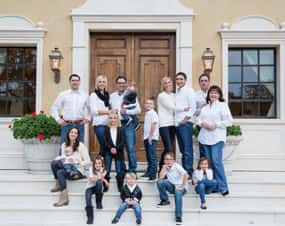 The Sebastiani family has been in the wine business for more than 115 years. Its current patriarch, Don Sebastiani, founder and chairman of Don & Sons, still pinches himself. “I grew up in the winery, climbed barrels, worked in the cellar and lived in a home surrounded by vineyards. And people ask me, ‘Do you get to the point where you take it for granted and it looks like any other kind of work?’ Candidly, that’s not been the case. The other day Donny [son, Don Jr.] had me over to taste wines. I felt like a wine nut who’d just been invited to a wine tasting—just a kid in a candy store. I still have as much fun as an outsider would have,” Sebastiani says.
The Sebastiani family has been in the wine business for more than 115 years. Its current patriarch, Don Sebastiani, founder and chairman of Don & Sons, still pinches himself. “I grew up in the winery, climbed barrels, worked in the cellar and lived in a home surrounded by vineyards. And people ask me, ‘Do you get to the point where you take it for granted and it looks like any other kind of work?’ Candidly, that’s not been the case. The other day Donny [son, Don Jr.] had me over to taste wines. I felt like a wine nut who’d just been invited to a wine tasting—just a kid in a candy store. I still have as much fun as an outsider would have,” Sebastiani says.While the original Sebastiani Winery is now owned by Foley Family Wines, Don and his sons, Donny and Aug, are still in the wine business. Donny runs Don & Sons, while Aug is president of The Other Guys (a name selected to separate the business from other companies bearing the Sebastiani name). Daughter Mia has branched into the specialty foods business with her Mia’s Kitchen brand, which her husband, Kendrick Coakley, manages.
Looking back on the good old days, Don remembers fondly that heads would turn when one mentioned they were in the wine business. “It was a lot more fun in the ’70s. We could get on TV just by picking up the phone and calling a reporter to tell them about grape harvests,” he says. Not so today.
When asked about the changes he’s witnessed, the first thing he mentions is the passion. “It used to be there was a lot of passion about wine at all different price categories. Clearly, the last five years or so, that’s started to level off and wane. It’s no question that, while our passion and family spirit hasn’t changed, the consumer and wine consuming marketplace view is different. For several decades, wine was continually growing and there was always something new. It was a hot property. Now, with the exception of certain high-end sectors, wine is leveling off,” he says. Today, there’s much more interest in artisan distilled spirits and specialty products, whether they’re food or beverages, Sebastiani asserts.
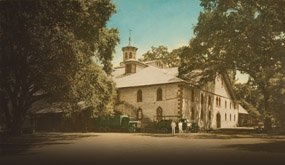
In Napa Valley, scions of the Peter Mondavi, Sr. family continue to own the iconic Charles Krug Winery, the oldest winery in Napa County and a National Historic Landmark to boot.
Peter Mondavi Jr., co-proprietor and treasurer, says being in the wine industry 40 to 50 years ago was comparable to “living in a bubble.
“Life was somewhat sheltered. We were pretty innocent. Everything revolved around the wine business and we really never envisioned where it would be today,” he says. “All the kids we grew up with had parents in the wine business. Entertaining was done at home and there weren’t grand mansions. Things were very subdued, but fun. There was a lot of camaraderie, socializing and sharing of ideas. Industry principals would come to the house because there weren’t a lot of restaurants back then.”
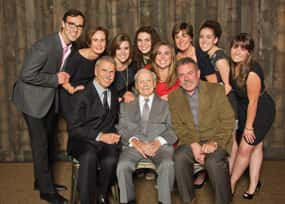 Mondavi notes that Napa Valley “has come a long way since then.” Fine restaurants are abundant, and the complexion of the wine business has changed as well.
Mondavi notes that Napa Valley “has come a long way since then.” Fine restaurants are abundant, and the complexion of the wine business has changed as well.“There are still a lot of families in business, but there’s also a tremendous mix and diversity, from family-owned startups to corporate owners to venture capital firms and partnerships,” he explains. “And back in the early days, the concept of a virtual winery [versus bricks and mortar] didn’t exist. Negociants hadn’t made their way to California. Today, there’s every form of winery and lots of businesses that support those models as well.
“Consultants weren’t the norm. I’m not sure if there actually were any! Everyone gathered at the coffee table to share ideas. Now, today, it’s so far advanced. Consultants have proliferated immensely and the knowledge base is so much richer and deeper,” he continues.
Charles Krug Winery has also undergone a metamorphosis. “I ran across one of our wine cards from the 1960s the other day,” Mondavi laughs. “We made 27 wines. Today, we have eight. And selling back then was about educating consumers. Today, wine is mainstream. There’s a large core base that’s well educated and understands wine. Our struggle now is to differentiate our wines from those of our neighbors—and from those of other continents.”
That’s a job Peter and his brother, Marc, will continue to tackle while the next generation of Mondavis waits in the wings. Peter’s son, Lucio, is a senior at Stanford, and his daughter, Lia, will be off to Harvard University in the fall. Peter’s not sure if they’ll eventually join the family business, but Marc has four daughters, two of whom work at the winery, while one works as an assistant winemaker at another winery. Marc’s youngest daughter will be graduating college later this year.
Wine, women and song
Over the last four decades, perhaps one of the biggest paradigm shifts is women “coming of age” in the wine industry. A female winemaker—once an anomaly—is now status quo. At the same time, the “art of winemaking” has also evolved. Whether or not the two are related is debatable, but Carol Shelton, co-owner, president and winemaker at Carol Shelton Wines in Santa Rosa, has been at the forefront of the change.
Shelton graduated with a bachelors in enology from UC Davis in 1978, in an era “when winemaking was considered to be an art and you had this very romantic image of winemaking magic,” she says, “with a strong bias against women in the business.”
While Shelton thought she might be able to land a job as a winemaker at a Napa Valley winery after graduating from college, she “couldn’t even get a job in the cellar. It was the lab or sales,” she says. Fortunately, she managed to get a toehold working for Zelma Long, one of the few women in the business at the time, who was then head winemaker at Robert Mondavi Winery in Napa. “It was sort of a miniature winery within a winery; we made small-lot batches to experiment with all kinds of variables, from vineyard to winemaking. And I got to do everything: I picked grapes, bottled wine and did lab work.”
In the winter, Shelton went to Australia, where the seasons were opposite, and worked as a lab tech for Peter Lehmann at Saltram’s Winery. “He was like the Robert Mondavi and Joe Heitz of Australia,” she explains. Women weren’t accepted much there, either. “Only guys worked in the cellar, and they were union. I learned that unions and artists don’t work together. Those guys saw it as a job, not a romantic avocation. And it revised my concept of winemaking so that I began to view it as a business and not just an art.”
When she returned, Shelton landed a job with United Vintners in the Central Valley. Owned by Heublein at the time, United Vintners made wines by formula. One of Shelton’s favorite ones (the name, not the wine) was called “Easy Days and Mellow Nights,” which used peach flavoring. The job “was an eye-opener, for sure,” she says. “Acid, pH, color, tannins—just about everything—was analyzed up the wazoo. Creativity was gone and it blew all my paradigms. Consistency was the goal, not perfection.”
In 1980, she went to work at Buena Vista Winery as an enologist and assistant winemaker and had the opportunity to learn from one of the most renowned winemakers at the time, the highly esteemed André
Tchelistcheff. “He was a romantic. One day, he came into the lab and said, ‘How are my ladies doing today?’ I was the only woman in the lab, so I told him I was fine. He quickly explained that he was referring to the wine in barrels. He called them ‘girls’ when they were growing on the vine and ‘ladies’ once they reached barrels. It was quite an honor to work for him; he taught me to pay attention to details in finishing a wine.”
Shelton then spent almost 20 years working as a winemaker for Rodney Strong Vineyards, which, at the time, also owned Windsor Vineyards and Sonoma Vineyards. (The Klein Family now owns Rodney Strong Vineyards.) Strong, a former professional ballet dancer, interviewed Shelton for the job and, during the session, actually asked her if she was pregnant or intended to become pregnant, which was (and is) completely illegal.
When she was promoted to head winemaker for the Windsor Vineyards brand, winery management didn’t want to give her credit for the wines she made (which, by the way, won more medals than any other U.S. winery during Shelton’s tenure).
In 2000, Windsor Vineyards was sold to Beringer Blass Wine Estates (it’s now owned by Vintage Wine Estates) and Shelton used her severance pay to start her own business. Today she produces 22,000 cases of 18 different wines.
“Winemaking is much different than it used to be,” she says. “Technology has allowed us to take marginal grapes and do things that are so much more remarkable. If you have excess sulfur or alcohol, you can remove it. You can correct acid and pH levels.”
Some of the young winemakers coming into the business “still think wines should make themselves,” Shelton says, which she finds frustrating. With so many tools available to improve wines these days, she doesn’t understand why new winemakers don’t take more advantage of them.
“Letting wines make themselves doesn’t result in the best wine. If the pH is too high, they oxidize fast—they fall apart and don’t last. Why not fix it?”
Aging well
Growing up the in the wine industry back then—and now—is a reflection of how society has changed on many levels, not solely in the North Bay. Things are much more complicated now.
 When Susie Bynum, daughter of Davis Bynum (whose eponymous winery was the very first on Westside Road in Healdsburg), was a little girl living Berkeley, her first memories of the wine world were trips to Napa Valley, where her grandfather, Lindley Davis Bynum, a wine judge and author of one of the first food and wine pairing books, owned vineyards on the hillside behind what’s today Whitehall Lane Winery.
When Susie Bynum, daughter of Davis Bynum (whose eponymous winery was the very first on Westside Road in Healdsburg), was a little girl living Berkeley, her first memories of the wine world were trips to Napa Valley, where her grandfather, Lindley Davis Bynum, a wine judge and author of one of the first food and wine pairing books, owned vineyards on the hillside behind what’s today Whitehall Lane Winery.“He’d take me to visit people like Louis Martini. We’d drive through the vineyards in an old Ford pickup that had window wipers on a vacuum release, and they’d keep going off,” she laughs. “Louie had tobacco-stained teeth. And I was fascinated with wine transporting. I just remember a river of red wine. I was so small and it looked so big. And Louis told me that, one time, someone actually drowned in it. I found that so exciting.”
After a short stint living in Southern California while Davis worked for a newspaper group, the Bynum Family returned to the Bay Area in the early 1960s. “Dad had accumulated a savings of $8,000 and thought it was a fortune. It actually was a shoe string,” she laughs. He started making wine using grapes from his father’s vineyard.
“Dad had a new Ford sedan—one of those ugly, four-door models—and we’d pull the back seat out of the car, drive it up to granddad’s, and dad would start filling wooden boxes with grapes,” Bynum remembers.
He opened a tasting room in Albany “in a funky warehouse and kept the cashbox in the fridge. We called it ‘cold cash,’” she says. In 1973, Bynum bought the Westside Road property.
“The biggest difference between then and now is that we kids did everything. We filled bottles with an old-timey bottler, we had a one-armed corker and we’d lay out the bottles and label them. The industry has evolved so much. My kids [daughter Lindley and son Chris] work at wineries today and everything is so much more sophisticated,” she says.
Today, Susie is the national sales manager for Ehret Family Winery and serves as chairman of The Meritage Alliance. She’s also working on her own, soon-to-be-launched wine brand: Susie Bynum Wines.
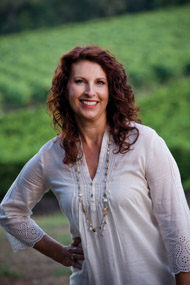 In Dry Creek Valley, Kim Stare Wallace, president of Dry Creek Vineyard, remembers moving from Boston to Davis when she was in third grade, and finally landing in Healdsburg schools at the start of fourth grade after her father, David Stare, bought a run-down prune orchard, planted vines and started the first new post-prohibition winery in Dry Creek. That was 43 years ago.
In Dry Creek Valley, Kim Stare Wallace, president of Dry Creek Vineyard, remembers moving from Boston to Davis when she was in third grade, and finally landing in Healdsburg schools at the start of fourth grade after her father, David Stare, bought a run-down prune orchard, planted vines and started the first new post-prohibition winery in Dry Creek. That was 43 years ago.“The whole valley was planted to prunes, hops and apricots. Sunsweet had its prune-processing facility by Memorial Bridge,” she remembers. “And when my parents came here and people found out what they were trying to do, they looked upon my dad as nuts: What kind of idiot would [start a winery]? I rode the school bus, and most of the kids’ parents were farmers or ran small businesses. They thought what we were doing was silly. My dad was a renegade,” Wallace says, and sometimes she’d get teased. “The idea of making world class wine was foreign to the locals.”
Wallace says there was a real sense of pioneering in the early days. Healdsburg was a “cow” town—very ag-centric and simple. “We’d all go to Lamplighter Pizza near the bowling alley on Friday nights for dinner.” She remembers the Dry Creek General Store, which was a hangout for motorcyclists and Hell’s Angels.
The family lived on West Dry Creek Road, and Wallace would ride her bicycle into Healdsburg. When she reached Dry Creek General Store, “I’d pedal so fast past the store because I was so afraid. Today, doctors and lawyers drive Harleys,” she says, but back then was a different story.
“I’d never in a million years let my kids do that now,” she exclaims.
Wallace and her husband, Don, have two children. Their daughter, Taylor, is in college in Nashville, and their son, Spencer, is a junior at Healdsburg High School.
“Their experience was so different from mine. Healdsburg is so much more sophisticated now, with great restaurants, coffee shops and stores. They grew up in an affluent town that isn’t the norm in America. Back in my day, there were so fewer places to go and we certainly didn’t have the influx of tourism and visitors. And there were no famous chefs,” Wallace says.
Looking back, Wallace says the biggest change is cultural. “We had that pioneering spirit and felt that what we were trying to do was daring and different. We were all trailblazers and it was an exciting time. There was a sense of camaraderie. We were all family vintners and we all knew each other. Sadly, there are so many in the industry now that I don’t know them all. It’s a radical change. Part of me misses it, and yet part of me also celebrates what it’s become today.”
So You Want to Open a Winery
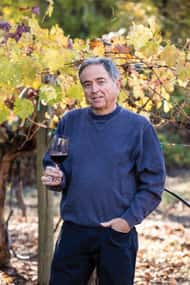 Starting a winery today is a far cry from the way it was done 40 years ago, or even 20 years ago, for that matter. Just ask Mitch Cosentino.
Starting a winery today is a far cry from the way it was done 40 years ago, or even 20 years ago, for that matter. Just ask Mitch Cosentino.The founder/winemaker of Cosentino Winery in Yountville (now owned by Vintage Wine Estates) and founder/winemaker of his new company, pureCru Winery, also is a consulting winemaker for several other wineries.
Back in the day (the late ’70s), Cosentino caught the wine bug while living in Modesto and started making wine by buying grapes grown by the Turner Family in Lake County, supplemented with fruit from other area growers. Because he didn’t have a winery, Cosentino used the Turner’s facility in Lodi to custom crush his first vintages.
“That was rare in those days. I was really one of the first ones to do it,” he says, noting that most wineries were bricks-and-mortar, with their own vineyards.
In 1982, he got his own bond in a shared warehouse and set up a full “winery” operation in another neighboring independent building in Modesto. “It was a building with no floor drains and no waste water management, because that wasn’t part of the requirements you had to meet in those days. It wasn’t even on the radar,” he remembers. “Today, waste water is one of the biggest dynamics in building a winery. In fact, it’s actually controlled where people have built and what they’re doing.”
Cosentino’s warehouse operation didn’t have air conditioning and “the insulation was some sort of spray-on, made out of some paper product. I had to use a swamp cooler because there was no AC. It was as backward as could be—nothing like today. Since we didn’t have floor drains, when we bottled, we’d have to sweep out all the water. We’d wash our equipment out in a parking lot and let all the waste water dry on the ground. And that was it. I even had to borrow a forklift from a business across the street. Dismal conditions, but I still made good wine—much of which is still good today,” he says.
Wanting to move to Napa, Cosentino bought property off Hoffman Lane and got a permit to build on a 100-year flood plain. “Problem was, we got two 500-year floods in a row,” he laughs. So he sold it and purchased the current Cosentino property next to Mustard’s Grill on Highway 29.
“No one wanted to buy [the 4.29 acre] parcel, because no one wanted to build a house on Highway 29 between a B&B and a restaurant. I looked at it as an opportunity to build a small winery, so I paid $235,000 for it—and some people thought I overpaid,” Cosentino says, noting that today the land purchase in that location with all permits would be worth between $8 million and $12 million.
While the building concept was good in the ’80s, it wouldn’t fly today, because it’s too close to the highway at a 250-foot setback and today’s smaller-than-10-acre minimums.
Loans were also difficult for wineries to get then. “In those days, the banks didn’t understand the business. It takes three years to get inventory [vintages] and you can only turn inventory once per year,” he says. Cosentino worked through private investors and an SBA loan he obtained after “I locked myself up for two weeks and typed a detailed business plan.”
In 1990, Cosentino opened. The company went public in 2005 and, in 2010, the public company (by then owned by other people) filed bankruptcy. In January 2011, it was acquired by Vintage Wine Estates.
These days, Cosentino makes his pureCru wine back where he began—in a custom crush facility under its own bond as an AP (alternating premise).
“It’s really different than 30 years ago, in that it’s no longer unique. In fact, I’m betting there’s more wine made—or at least bottled—in the industrial area of Napa than there is up-valley,” he says, referring to the beautiful estate wineries that dot the landscape, beckon tourists and create lasting romantic images of wine that’s so vastly different from the reality of its production in the modern era.
A Whole New World
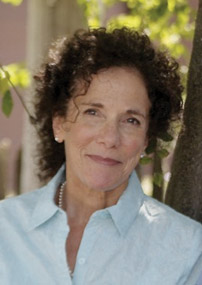 The problem with making wine is you have to sell it. Over the years, that’s become far more complicated, as the industry—and communications technology—have evolved.
The problem with making wine is you have to sell it. Over the years, that’s become far more complicated, as the industry—and communications technology—have evolved.One of the biggest and most fundamental challenges a wine brand faces is differentiation: Why should a consumer buy Wine A over Wine B?
“We have an oversaturation of brands, and many have come and gone because they failed to differentiate,” says Jan Mettler, a partner at Boss Dog Marketing in Healdsburg. Many have relied on their winery edifices and tasting room presence in towns throughout Wine Country. But times are changing, “and it’s amazing how many brands today don’t have bricks and mortar—or vineyards. They’re just brands, so they have to really work at it.”
A wine brand must “know its audience, have a core message that’s distinct and memorable, and must be consistent about telling its story. An image is a result of 1,000 consistent acts, not a single [wine] score,” Mettler says.
Getting media coverage for a wine brand continues to be important when it comes to selling wine. Yes, wine scores, divvied out by wine reviewers, still matter. Distributors, in particular, want third-party endorsements, largely because it makes it easier for them to sell the wine. “Sales guys want scores, scores, scores to get distribution,” says Mettler.
“But now it doesn’t really matter where the points come from,” says Tim McDonald, owner of Wine and Spirits Spoken Here, a Napa public relations and marketing consultant company. “It’s not just the traditional guys anymore. Today’s wine business is way more exciting, although complex, with respect to media. There are so many more places to get attention. The number one evolution in wine media is the migration from traditional ink to digital ink. Blogging fired up about 10 years ago, and there’s been an explosion of citizen journalism that, I believe, has peaked and has now settled down a bit. But no matter what, brands still need third-party endorsements.”
Do wine competitions still matter?
McDonald says they do. “The San Francisco Chronicle judging had a record number of entries this year, because people need to move their wine. Whether small to medium or Barefoot, everyone needs a third-party endorsement, and the brand moves faster at retail if there’s something said about it,” he says. Competitions work because “consumers like sound bites and eye bites. If it says 90 points or gold medal California State Fair, consumers say it’s good enough for them.
“Everyone gets what a gold medal means,” McDonald says. “We watch the Olympics: It means you won. We also know silver and bronze mean you didn’t win.”
Immediacy is also important. Social media is here to stay as a communication tool, says McDonald. “That train has left the station and you can’t ignore that piece of the conversation. There are more than 10 million wine conversations each day on Facebook, Instagram, blogs, Twitter, Yelp and so on.”
“The Age of Information has morphed into the Age of Short Attention,” Mettler concludes. “Buyers read peer reviews and can find anything online.”
But there’s something else Mettler believes in—the handwritten note to a wine writer or reviewer. Because no matter how much the industry has changed over the years, “the wine business is still a relationship business,” she says. And a handwritten note is a considerate connection.
Some Things Stay the Same
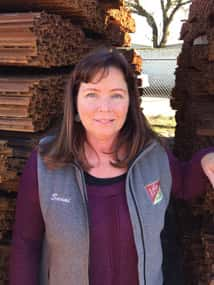 There’s an old saying that the more things change, the more they stay the same.
There’s an old saying that the more things change, the more they stay the same.And that’s the case with Vineyard Industry Products (VIP) of Windsor, which provides trellising and other vineyard supplies to growers throughout the North Bay and around the world.
In business since 1979, the family-owned firm has directly benefited from the explosion of the wine industry. It started out in the garage of Paul and Laraine Downer’s Santa Rosa home and now has three stores in key California winegrowing regions: Windsor, Paso Robles and Los Alamos.
“When we look back, it’s really amazing how much hasn’t changed,” says Sunni Ashley, company president. “Trellising itself has changed just a little to accommodate narrower, denser planting patterns. There are many reasons to plant denser, one of which is the plant is fighting for resources and that produces more concentrated flavors. And today, you see clones and rootstocks that are matched to trellising systems, which you didn’t have in the past. We’ve also noticed a few changes in pruning techniques because of the growth of mechanical harvesting, which is probably the biggest change in our business overall. We look for that to continue because of the labor shortage due to immigration laws,” she explains.
Growers prefer steel to wood these days. “Inline stakes are always steel now,” Ashley adds. “Some growers will use wood at the end of the rows that border the road because it looks good from the highway, but the inline stakes will be steel.”
“We’re seeing a lot more night work now,” Ashley says, not only at harvest but during the full growing season. “That means there’s more demand for lighting.”
One thing about the supplier business that’s never changed is “the outstanding quality of our customers,” Ashley says. “They’re the salt of the earth—wonderful people devoted to their families and their communities. The integrity of the grower is unmatched. I’m so grateful to be a part of it. You just don’t see it like we do in this industry. There’s something about working with dirt. They’re wonderful people.”


